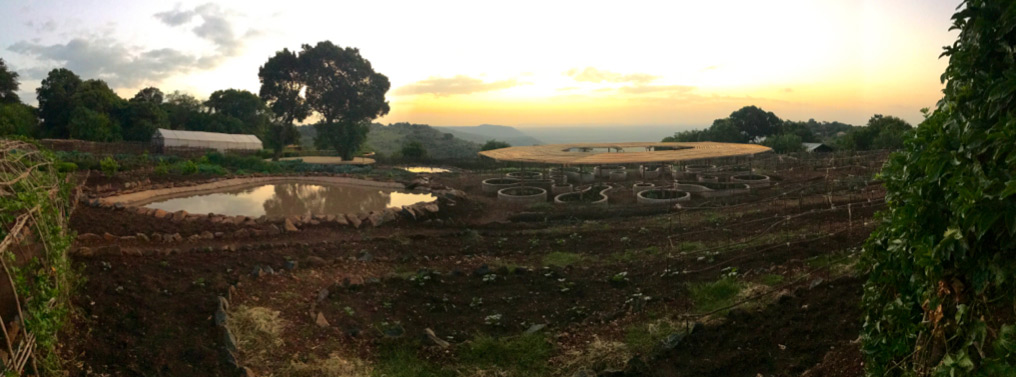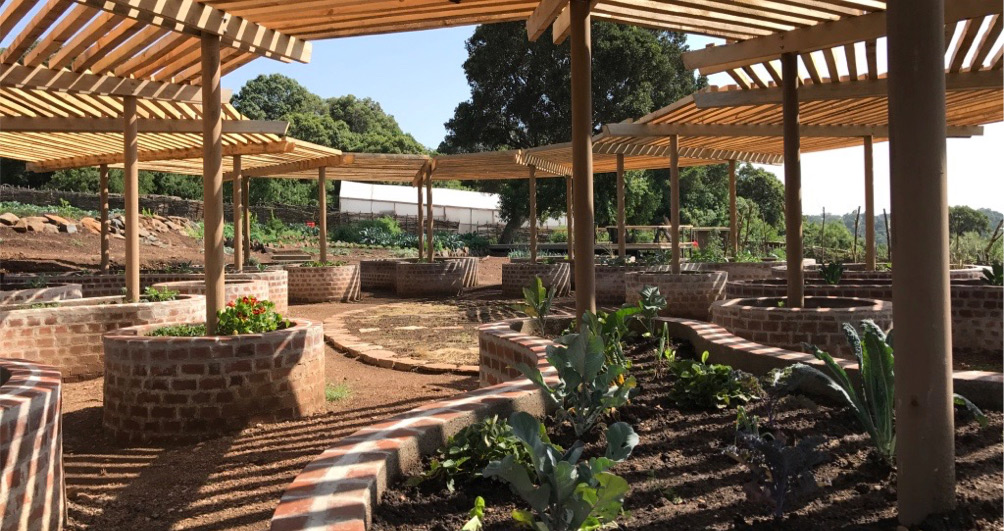It’s Calabash O’ Clock in our Shamba
18 July 2017 | Inside Angama | Ian Dommisse

Meandering through the passion fruit arbor and spying the edible forest that welcomed me home, two things struck me: the shamba at Angama Mara holds the ‘project of a lifetime’ badge in my book; and the garden had blossomed beyond my wildest dreams. With 12 months since the first curve was marked out on site, I returned to this paradise for nine days of gardening immersion. I’ll continue from where I left off (in Snakes and Ladders) at Zone 3 – the Calabash Garden. Whilst the section of the garden is named after the shape of its raised beds, the design was inspired by the growing conditions of broccoli. For best results broccoli shouldn’t grow in the same soil for 3 years and, given that it takes roughly 3 months from seed sowing to harvest, 12 spaces would be needed for a full rotation cycle. In contrast to monoculture, companion planting suggests that growing certain plants and herbs together is mutually beneficial. Thus each of the 12 spaces has a primary vegetable with partnering herbs and flowers. Like clockwork, after each harvest, vegetables rotate 30 degrees and continuously boost the soil’s micro bacteria.

In order to increase plant access and visibility (as well avoid guests’ back injury) I felt that raised beds would work well. The pergola was designed to dapple the sunshine whilst not blocking the view of the Mara as seen from the neighbouring Zone 1.

Having such a wide variety of plants in close proximity will soon offer our guests the opportunity to handpick a ‘Salad a la Shamba’ and enjoy it then and there in the garden. The highlight of the trip has to be the time I spent with the staff who welcomed me, told me how much they love their new shamba, and generally spoiled me rotten. The shamba team itself has grown in order to sustain a garden of such magnitude and I’ll try to capture the passion which fuels their nurturing hands with an encounter we shared one afternoon.

There had been a sudden heat wave after lunch and an ominous colour lay on the horizon. Standing below the pergola I asked Ignatius if he thought it would rain. ‘In 5 minutes’ he estimated. Walking back to camp takes 10 minutes and so I suggested we make our way. But he continued to stroll through the curves as if it was his last chance to explore the garden. During my jog back to my tent the rain started and I realised why he stayed in the shamba. The giant raindrops started slowly and gradually increased in frequency. The setting sun sparkled through the falling water and my jog came to a standstill, as the majesty of the surrounding beauty was too much to run from. Observing the food forest in this golden, rainy yet mild evening, Ignatius was where he needed to be in order to witness his shamba at its best time.



